Best Architecture Client Feedback Tools to Use in 2026

- Architects today know design alone doesn’t build loyalty anymore, so client feedback tools are now key to shaping better collaboration and trust.
- Digital and cloud-based systems have replaced old paper surveys, giving firms real-time insights and faster action to improve client experience.
- Platforms like ClearlyRated help AEC teams collect structured feedback at milestones, track satisfaction trends, and identify at-risk clients before issues grow.
- Firms using these tools see higher client retention, stronger referrals, and measurable business growth through repeat projects and improved relationships.
Architects today know that great design alone cannot win clients’ trust or long-term loyalty anymore. As client expectations rise, feedback has become the real foundation of meaningful collaboration in every project.
The 2025 Benchmarks, Insights, and Trends: Client Experience in the AEC Industry report proves the need for both. In our report, we found that:
- 78% of buyers value a seamless experience when choosing a firm
- 68% rate strong communication as highly as technical skill
A strong suite of architecture client feedback tools helps you gather insights, measure loyalty, and grow referrals. When you use a reliable client feedback system for architects, such as ClearlyRated, you bridge the gaps between vision and delivery while keeping clients actively involved throughout the process.Why Client Feedback Matters in Architecture
Architectural projects thrive on collaboration, yet many firms still make decisions based on assumptions rather than on direct client input. When teams overlook structured feedback, they risk misinterpreting satisfaction as success and missing critical insights that could refine both design and delivery.
In fact, relying on signals like repeat business or the absence of complaints doesn’t reveal how clients truly feel throughout a project. A client may return simply because switching firms is inconvenient, or stay silent to avoid uncomfortable conversations. Others might appreciate the final structure but feel disconnected during the process. According to a recent industry report, only 8% of clients in AEC firms agree that their experience matches what firm leaders believe it is. The result is a silent gap between how architects perceive their service and how clients actually experience it.
To make client feedback truly actionable, architecture firms are now using structured methods such as:
- Regular project check-ins that capture evolving client expectations before they escalate into frustration
- Anonymous surveys using NPS tools for architecture firms to gather honest, quantifiable responses on satisfaction and loyalty
- Post-project reviews that assess not just outcomes but the overall collaboration journey
📌Related read: Client Feedback Tool Architecture Firms Actually Use
The Evolution of Feedback Systems in Architecture
The shift from traditional to digital systems transformed how architects understand and improve the client experience. On the one hand, traditional approaches collected feedback through handwritten notes and email threads that often disappeared when team members changed roles or projects evolved. In contrast, digital feedback systems now gather client input through platforms where responses link directly to project tasks and revisions.
Below is a comparison of those two models:
The rise of cloud-based collaboration platforms has accelerated this shift and made it smarter. Currently, around 32% of architecture and engineering firms have shifted their operations to cloud-based solutions and have seen significant improvement in client satisfaction scores compared to those relying on manual feedback methods.
These platforms give project managers and partners a clearer view of what clients actually think, helping them improve every stage of the relationship.
At ClearlyRated, we’ve built our platform specifically for AEC and professional services firms, with the unique pace and pressure of AEC projects in mind. Our Client Savvy Platform makes feedback part of the everyday workflow, turning it into an ongoing source of insight and action.
Our platform includes:
- Milestone-based survey templates that automatically collect feedback at key project stages, ensuring timely input

- Real-time dashboards and alerts that help teams respond quickly when clients raise concerns
- Integration with CRM and ERP systems like Deltek and Unanet, so data flows seamlessly between platforms
- Closed-loop tracking to confirm that every client issue has been addressed and resolved
- Benchmarking tools that allow comparisons across projects, clients, and industry peers for a deeper understanding
These capabilities help architecture firms turn every project interaction into a long-term opportunity for loyalty, growth, and repeat business.
Key Benefits of Using Client Feedback Tools
Using a modern feedback platform unlocks several key advantages for your practice. Each benefit builds on the others, creating lasting relationships that go beyond project delivery.
- Improved communication and transparency: Architects build stronger trust when client expectations remain visible and measurable through a structured architecture practice management feedback loop that supports clarity across every interaction.
- Real-time updates and revisions: Teams update plans instantly and make corrections faster, which helps avoid confusion and wasted rework across distributed teams.
- Enhanced project accuracy: When your team gathers feedback regularly, your firm spots misaligned expectations earlier and delivers stronger outcomes.
- Relationship health tracking: Using reliable survey tools from an architecture firm gives teams an accurate pulse on client sentiment and strengthens every ongoing partnership.
- Referral growth and reputation: When CX strategists consistently monitor project feedback, firms naturally gain loyal clients who recommend their services with confidence.
📌Suggested read: AEC Client Research Myths
Features to Look for in Architecture Client Feedback Tools
In architecture, you need tools that flex across phases. For example, in the design phase, you want tools that let clients annotate drawings, comment on mood boards, and provide satisfaction input on collaboration. During construction, you want to capture feedback on site communication, schedule clarity, change delivery, and logistics. For post-occupancy, you may want to track how the space functions, what the client perceives about maintenance, and how they feel about the final result over time.
Balancing immediate collaboration (tools for drawing feedback) with structured satisfaction measurement (surveys around firm performance) gives you a complete picture. Just make sure your prospective tool does more than just send generic surveys.
To make it easier for you to choose, here are some of the key features to look for in architecture client feedback tools:
- Milestone-based feedback triggers (design approval, construction handover, occupancy), so you catch issues when they matter
- Open-ended and structured questions, so you gather both numeric ratings and client voices
- Rich collaboration on visual assets, so clients can comment on plans, renderings, and models, which is critical in architecture
- Integration with your tech stack, including building information modeling (BIM) tools, project management software, and CRM, so feedback doesn’t exist in a silo
- Actionable dashboards and alerts, so your team can follow up with clients who show signs of dissatisfaction rather than waiting for them to cancel
- Benchmarks and industry-specific templates, so that you can compare your firm’s performance with peers rather than flying blind
Top Architecture Client Feedback Tools in 2026
Architectural firms that aim to deliver an outstanding client experience now lean on platforms that enable them to gather feedback, track engagement, and turn insights into action. Each of the tools below offers a slightly different approach to collecting client input, keeping clients engaged, and using that feedback to build stronger relationships.
Now that we have a fair understanding, here’s an in-depth look at some of the best-rated platforms that architecture firms use today:
1. ClearlyRated for architecture firms: beyond project-level feedback
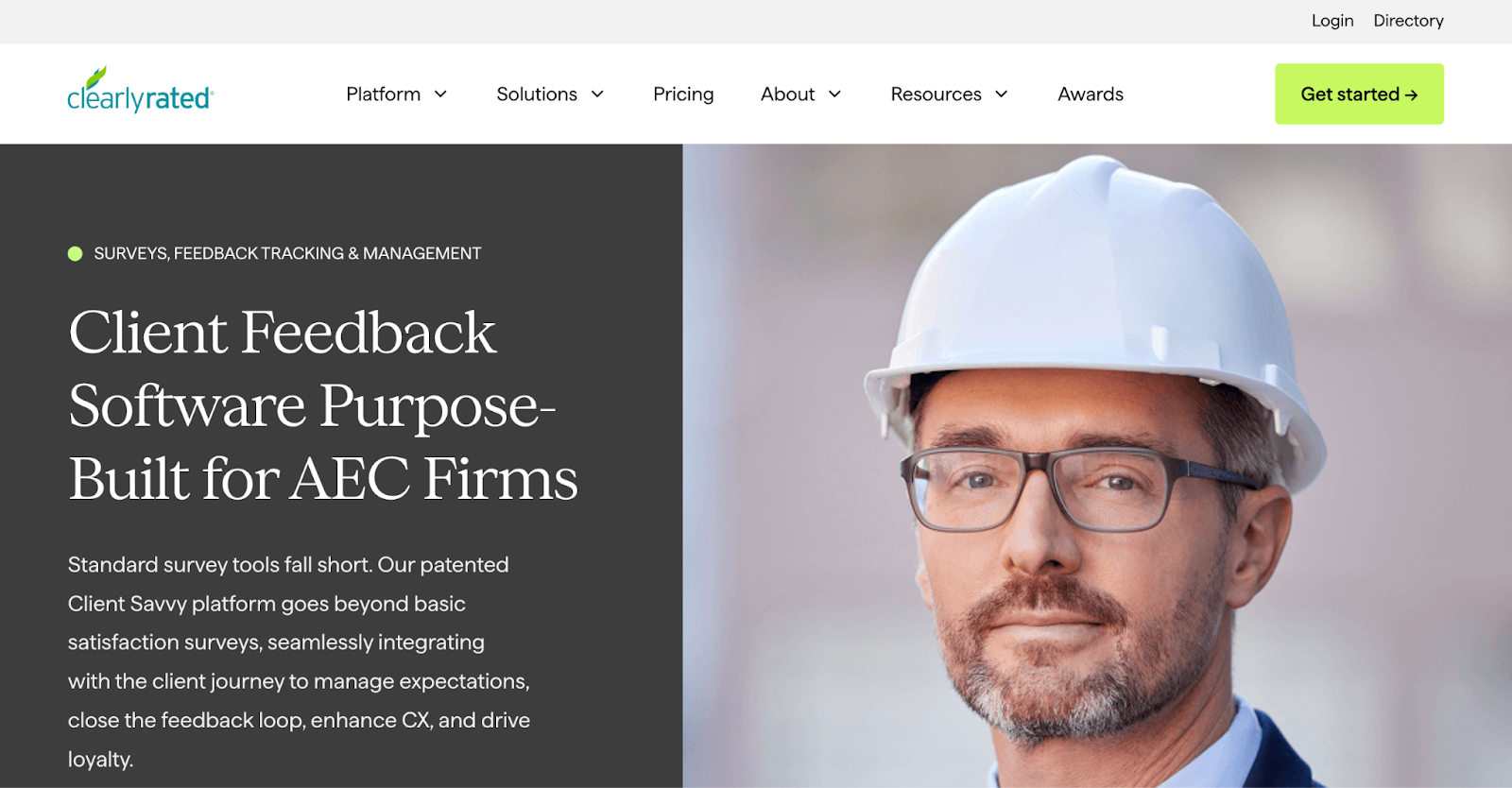
Many architecture firms rely on gut instinct when judging client satisfaction, which often leads to overlooked frustrations and missed opportunities. ClearlyRated was built to replace assumptions with data through feedback systems tailored for AEC workflows.
Our Client Savvy platform integrates structured listening into every stage of a project, turning casual interactions into measurable experience insights that fuel smarter decisions:
Industry-specific NPS surveys built on 20 years of A&E data
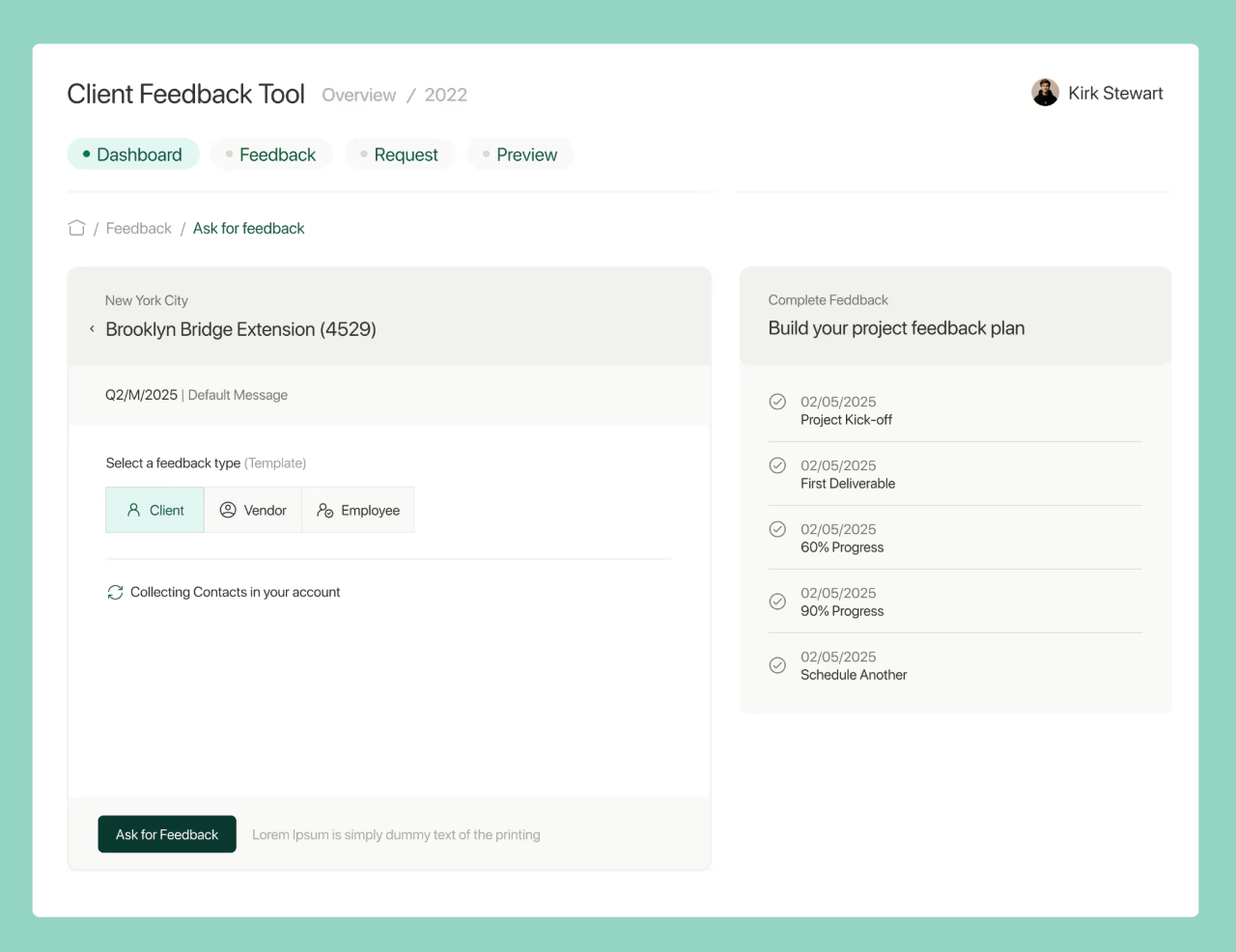
Our platform goes beyond traditional survey tools with question models tested across thousands of architecture and engineering firms over the past two decades. These surveys form the foundation of its Voice of Customer (VoC) programs, which encourage clients to share detailed and honest feedback.
The patented Client Experience Indicator (CXI®) scale captures up to 380% more hidden pain points than NPS alone. This lets teams measure how expectations shift through each milestone and act before dissatisfaction grows. Firms using our ongoing feedback model have seen an average 17-point increase in their net promoter scores (NPS), proving that structured listening directly drives stronger relationships and repeat projects.
Identifying at-risk clients before project completion

In most firms, client frustration only becomes visible after the project wraps up, which is often too late. Our platform solves that problem with continuous monitoring and real-time alerts that flag at-risk relationships early. The system evaluates client sentiment across multiple feedback points and categorizes them as thriving, stable, or at-risk.
Project leaders can immediately follow up with clients who need attention, supported by AI-generated response guidance that helps maintain a professional and empathetic tone. The result is more retained relationships, with 83% of at-risk clients successfully recovered, according to our 2025 results.
Converting satisfied clients into marketing assets and referrals
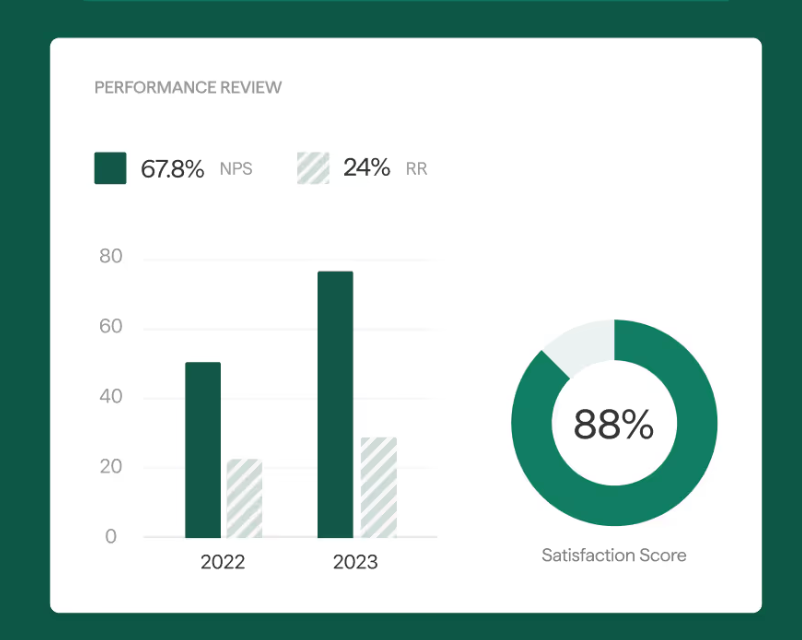
When clients feel genuinely valued, they naturally become advocates for your firm’s work. Our analytics make it easy to identify promoters and convert their feedback into testimonials, referrals, and case studies.
Firms using the system report an average of $1.8 million in new business gained through referral programs, triggered by feedback insights. This turns every happy client into an authentic advocate while strengthening brand trust in competitive bids.
📌Also read: 9 Common Net Promoter® Score Problems & Mistakes
2. Typeform

Typeform makes feedback collection feel more like a natural conversation than a task. Its AI-driven forms help AEC teams collect meaningful data while keeping every interaction smooth and personal. Here’s how:
- Design engaging and intuitive forms: Create forms that look and feel like a genuine exchange. Use pre-built templates or let AI generate tailored questions that capture clear, thoughtful client responses without adding to your workload.
- Automate data collection and follow-ups: Trigger automatic responses, segment data, and send instant follow-up emails that keep projects moving forward. This setup helps teams act quickly on client input while maintaining consistent communication.
- Connect with key business tools: Integrate your forms with CRMs, marketing software, or scheduling tools so every response flows directly into your existing systems for immediate use.
It works best for use cases such as client onboarding, project feedback, design preference surveys, referral requests, and post-completion evaluations.
3. Miro

AEC firms frequently use Miro to brainstorm design ideas together and collect real-time feedback from clients and project teams. Its blank-canvas setup invites everyone to share sketches, comments, and options in a shared space. The platform brings this creative process into the feedback loop with tools built to support open collaboration and visual interaction:
- Interactive whiteboard and sticky note tools: Invite teams and clients to drop ideas, mark up concepts and build visual conversations as if everyone were in the same studio.
- Real-time collaboration and comment threads: Let participants see changes instantly, leave feedback in context and iterate quickly without waiting for separate email replies.
- Custom templates and frameworks for ideation: Pick pre-built layouts or build your own sessions so that you move from free-form sketching to structured input without forcing clients into rigid forms.
However, some users report that Miro’s performance slows significantly as boards grow large, with heavy graphics and multiple contributors, which can disrupt team flow. Other users mention a steep learning curve for clients or team members unfamiliar with the interface, who struggle to engage meaningfully with the board.
4. ClickUp

When AEC firms use ClickUp for visual work management, they manage tasks, revisions, and client collaboration effectively. Its templates, views, and collaboration tools offer a unified space for design firms to track progress and collect feedback from stakeholders in real-time:
- Use project-specific templates: Select a ready-made architecture template and adapt it to your project needs so you start with a structure immediately and reduce setup time.
- Invite clients: Give your clients limited workspace access to review tasks, leave comments, and approve deliverables so you keep everyone informed without opening all internal channels.
- Automate feedback reminders: Set task automations to trigger when milestones arrive or design phases are complete, so you prompt clients to review or respond without manual follow-ups.
5. Trello
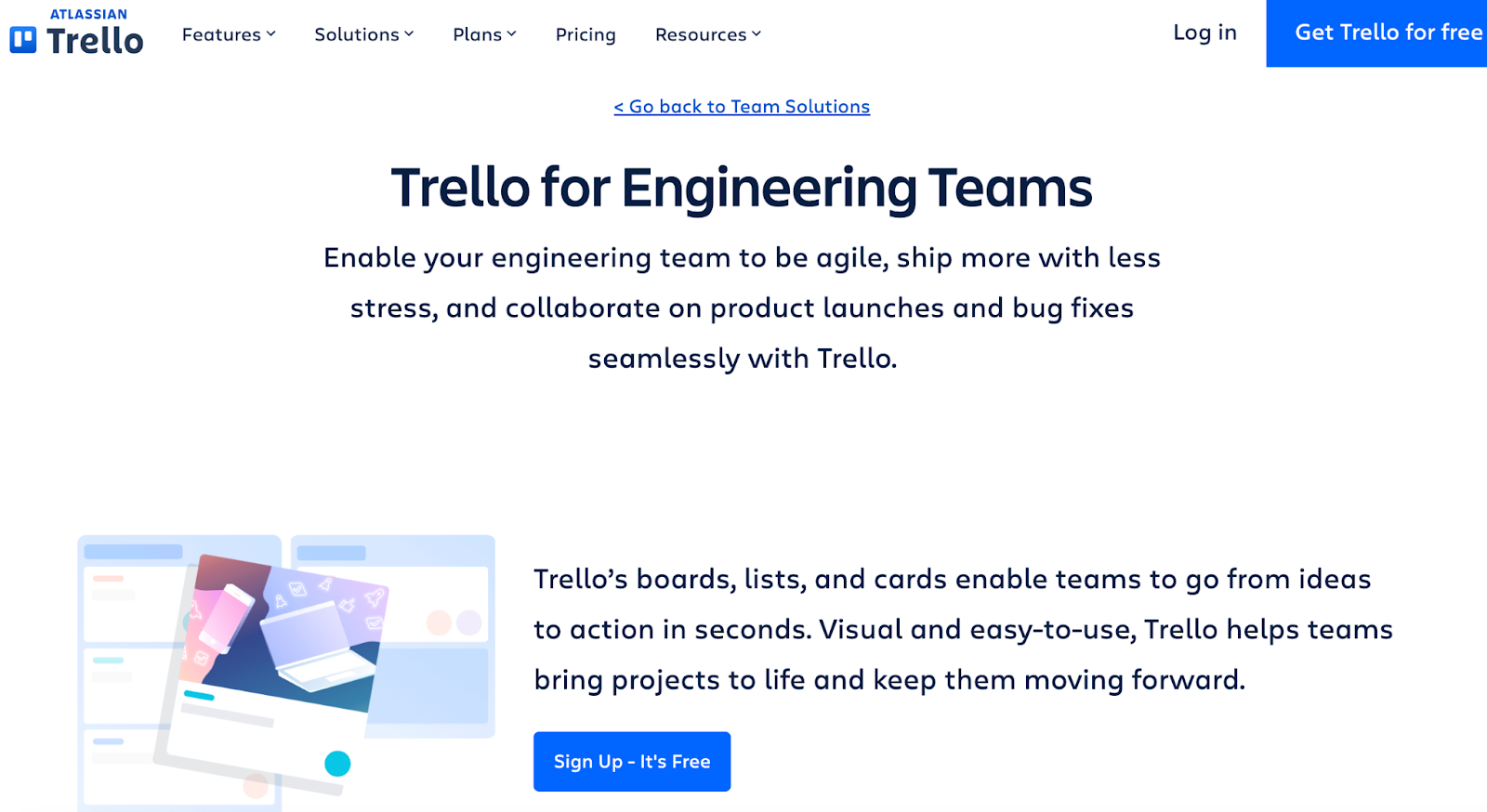
Trello helps firms convert scattered design discussions into structured, transparent workflows that keep architects, contractors, and clients on the same page throughout the project. Each board serves as a live project tracker, enabling teams to share drawings, assign tasks, and record client feedback in real time, making coordination effortless across locations.
Here’s how it helps teams manage tasks more effectively:
- Visual task management: Use Trello’s boards and cards to organize every project phase, making design approvals and site updates easier to track.
- Centralized collaboration: Track revisions, share files, and communicate with consultants and clients in one shared workspace that keeps everyone informed.
- Automated workflows: Reduce repetitive updates with automation tools that trigger notifications and task movements to maintain steady progress.
6. Figma
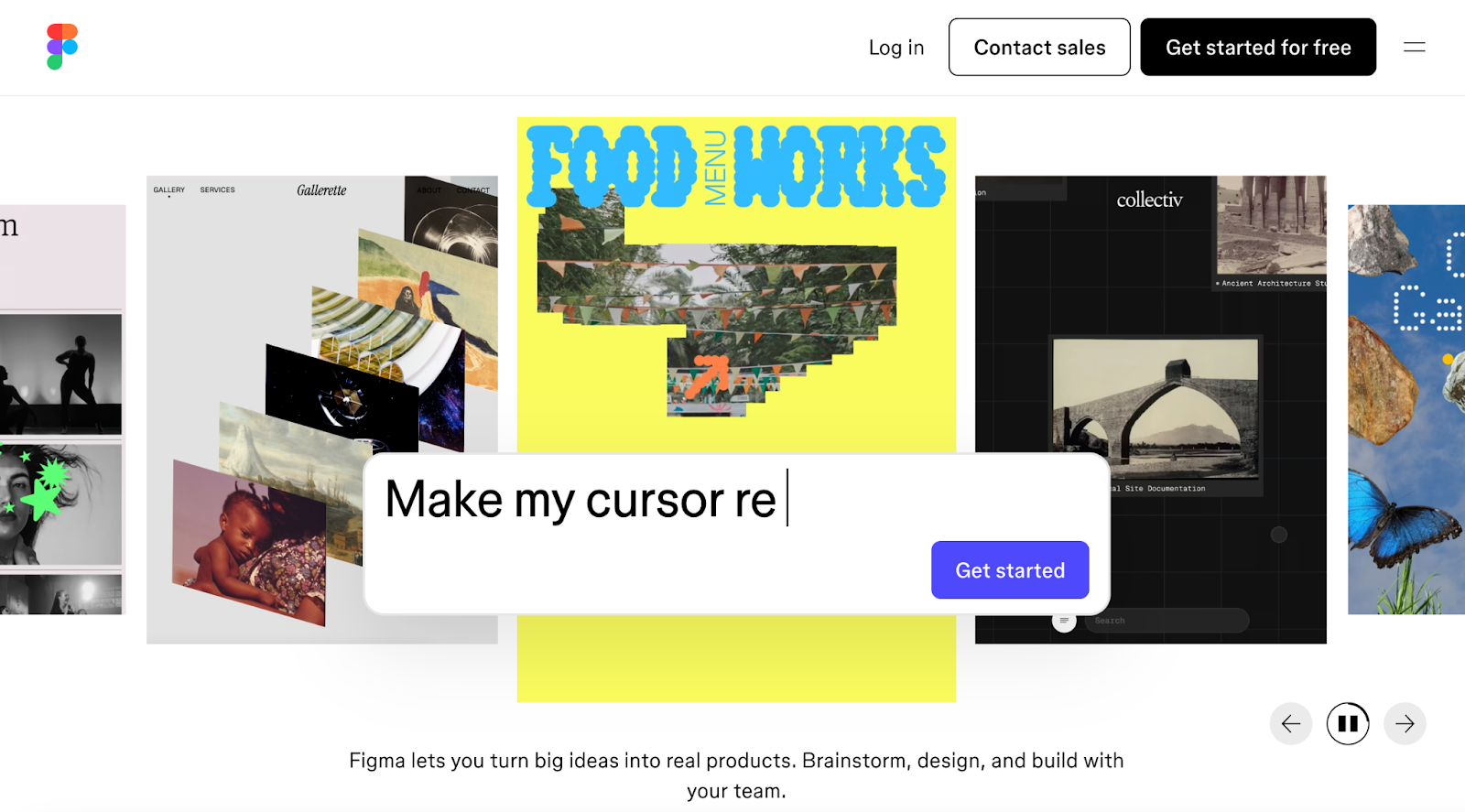
With Figma boards, teams can gather visual feedback from clients and internal teams during design phases. The tool supports shared commenting on layouts, sketch iterations, and collaborative mark-ups to make the client review feel interactive and immediate. Here’s how:
- Real-time collaboration on boards: Invite clients and consultants to leave comments directly on design frames, so you can address issues and suggestions as the concept evolves.
- Reusable component libraries: Build shared collections of elements, styles and tokens so your design teams use consistent visuals across multiple projects without repeating setup work.
- Integrated hand-off workflows: Connect your Figma files to other tools and workflows through plugins and APIs so designers, engineers and project managers stay synced and aligned.
7. Asana
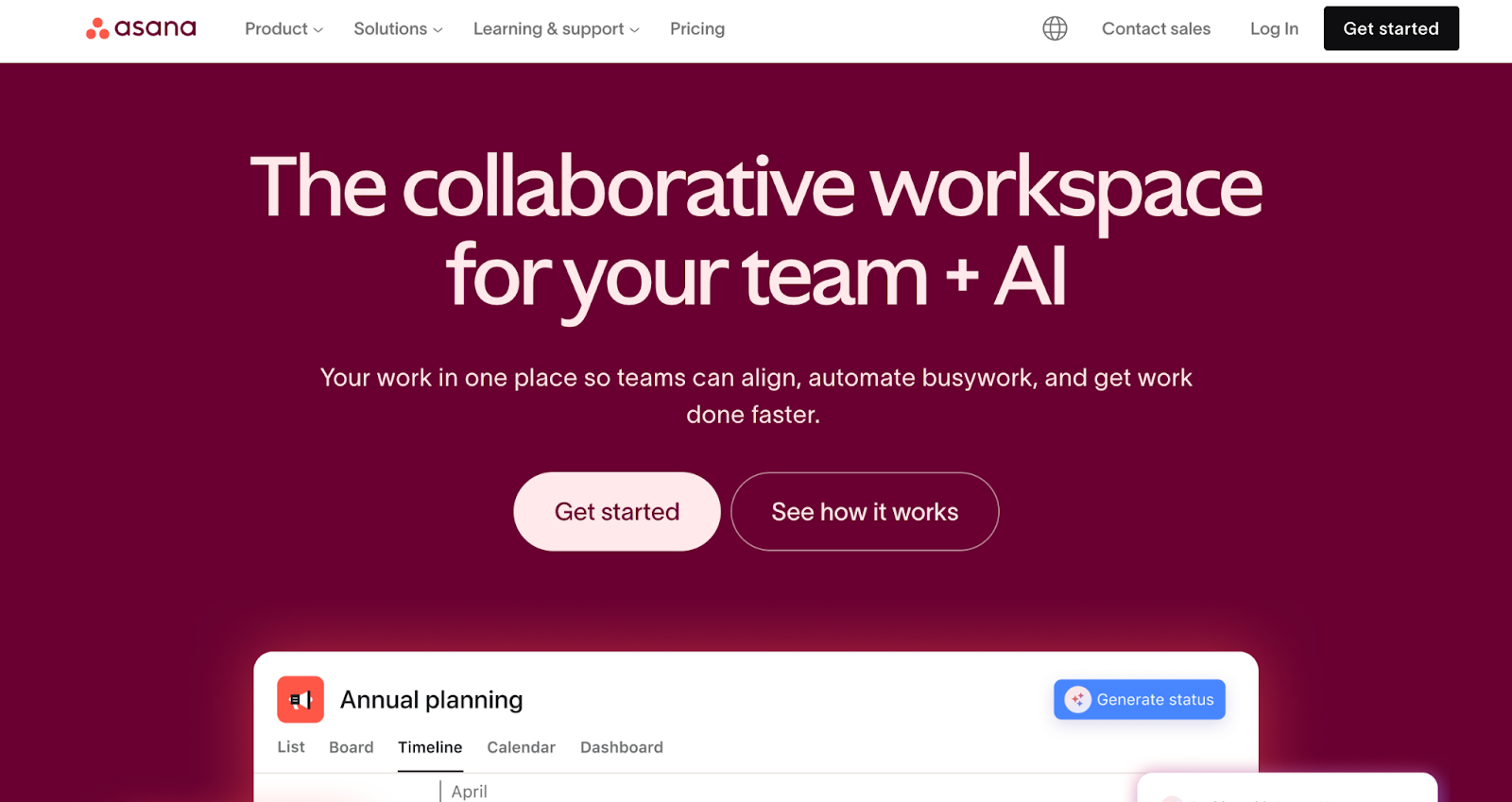
Asana helps AEC teams manage large-scale projects, track deadlines, and keep multiple teams coordinated on complex construction and design workflows. They can also automate routine steps, reduce unnecessary meetings, and focus on delivering designs and site updates efficiently in this way:
- Visual project tracking: Use boards, timelines, and lists to monitor project milestones and deadlines so every team member can see progress in real time.
- Integrated task automation: Set rules for repetitive updates and notifications so your team spends more time executing work instead of managing it manually.
- Centralized team collaboration: Gather architects, engineers, and external consultants in one workspace so feedback, approvals, and project documentation are always accessible.
Why Architecture Firms Need Dedicated Client Satisfaction Measurement
Measuring project success is only part of the story because client relationships evolve. Using ClearlyRated, firms can collect detailed feedback across every engagement and turn insights into actionable steps that improve loyalty and revenue:
- Project feedback does not equal relationship health: Feedback from a single project rarely captures the whole client experience and can mask risks or frustrations. We collect milestone-based input and use the patented CXI to reveal hidden issues. Teams receive alerts and actionable insights to act quickly, keeping clients satisfied and avoiding preventable conflicts.
- Predicting client retention during multi-year engagements: Clients may appear satisfied early, yet leave during long projects if problems go unnoticed. Our platform tracks sentiment over time with real-time dashboards and automated follow-ups. Teams gain visibility on at-risk relationships and can intervene before issues escalate.
- Benchmark your firm against industry standards: Without context, it is hard to gauge satisfaction accurately. We compare your firm’s NPS and other metrics with those of AEC peers, delivering reports and recommendations that help teams improve the client experience, strengthen relationships, and make smarter decisions.
Implementation Strategy: Building a Complete Feedback System using ClearlyRated
To get the most from feedback tools, use a three-layer strategy:
Layer 1: Real-time design feedback during active projects
The first layer focuses on real-time design feedback during active projects, allowing clients to provide input while designs are in progress. This approach gives teams immediate visibility into client preferences and potential issues, reducing the risk of costly revisions and misunderstandings.
Our platform makes it simple to request and collect this feedback, presenting results in an intuitive dashboard that keeps everyone informed and ready to respond.
Layer 2: Milestone satisfaction check-ins
The second layer incorporates milestone satisfaction check-ins to track sentiment as projects advance. By surveying clients at key points, firms can see trends in satisfaction and identify potential concerns before they escalate.
We automate survey delivery and provide actionable alerts so project managers can intervene promptly, reinforcing trust and demonstrating attentiveness. This ongoing feedback builds a clear picture of the client experience over time rather than relying on a single touchpoint.
Layer 3: Post-project NPS and relationship measurement
Finally, the third layer measures post-project satisfaction using Net Promoter Score and relationship-based metrics. We contextualize these results against industry benchmarks, revealing both strengths and areas for improvement.
The platform also identifies high-potential clients for referrals or repeat business, helping firms turn satisfaction insights into revenue growth.
The Right Tool for Every Feedback Touchpoint
Choosing the correct combination of tools lets firms capture feedback from design through construction and firm-level satisfaction. Our Client Savvy Platform collects honest client input, uncovers hidden frustrations, and delivers actionable insights that teams can immediately act on to improve relationships. Using milestone-based surveys, automated follow-ups, and real-time dashboards, firms receive clear visibility into project performance and long-term client sentiment.
The insights also reveal opportunities for repeat business, referrals, and new projects, creating tangible growth for your firm. Get started with ClearlyRated now to capture feedback that drives stronger client relationships and sustainable results.
FAQs
What's the difference between design feedback tools and client satisfaction survey tools?
Design feedback tools focus on project-specific elements such as layouts, colors, and features, helping architects refine deliverables. ClearlyRated goes further by measuring overall client satisfaction and relationship health, identifying risks, and capturing insights that influence repeat business and referrals.
When should architecture firms send NPS surveys during long-term projects?
Firms should send NPS surveys at key milestones, such as after design approvals, during construction, and upon project completion. Surveys ensure clients feel heard throughout the project and provide actionable insights before issues escalate.
Can client feedback tools help architecture firms win more proposals?
Yes, they provide evidence of satisfied clients and strong relationships, which boosts credibility during pitches. ClearlyRated turns promoters into positive testimonials, referrals, and awards, giving firms a tangible advantage when competing for new projects and proposals.
FAQs


.png)





%5B1%5D.webp)
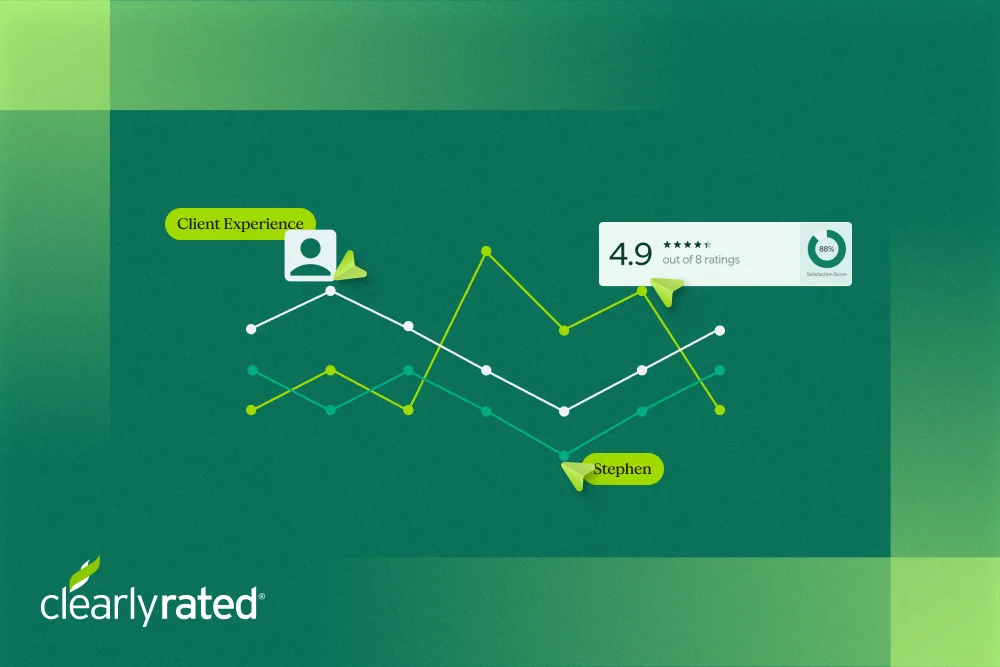

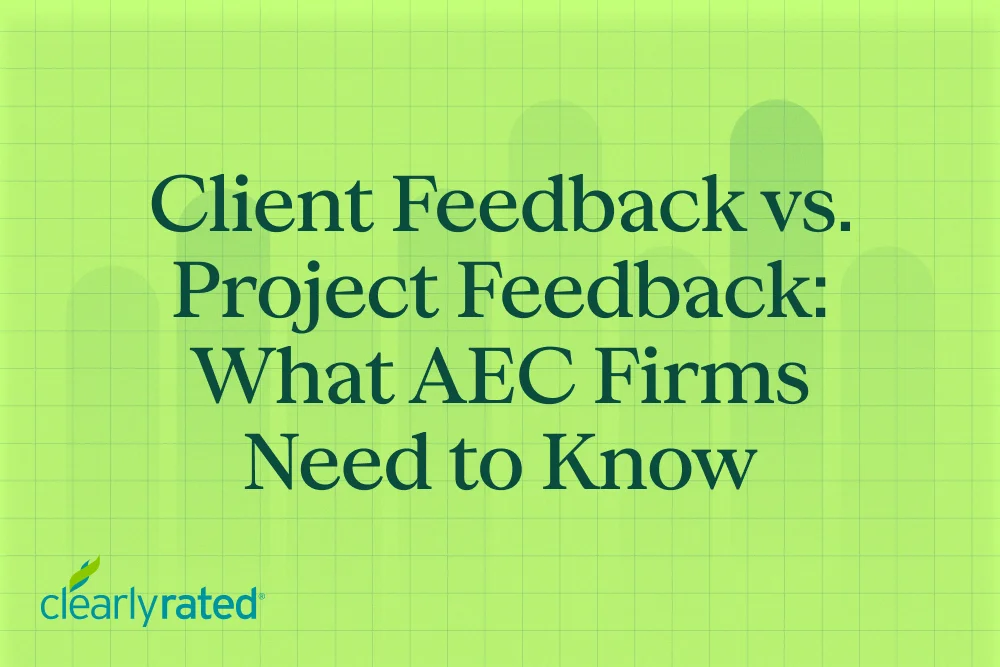

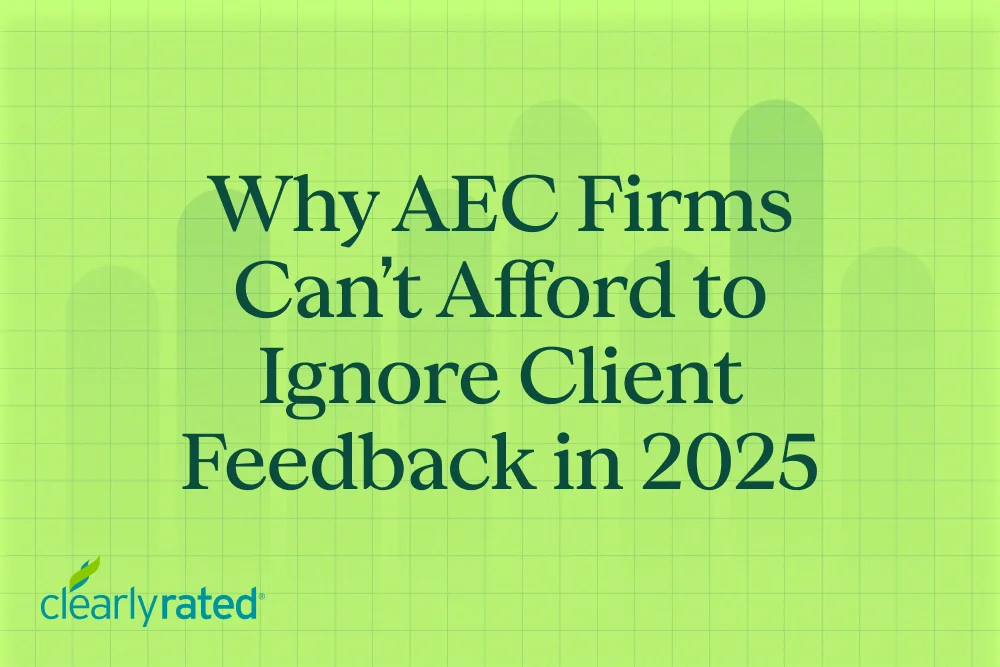


.png)

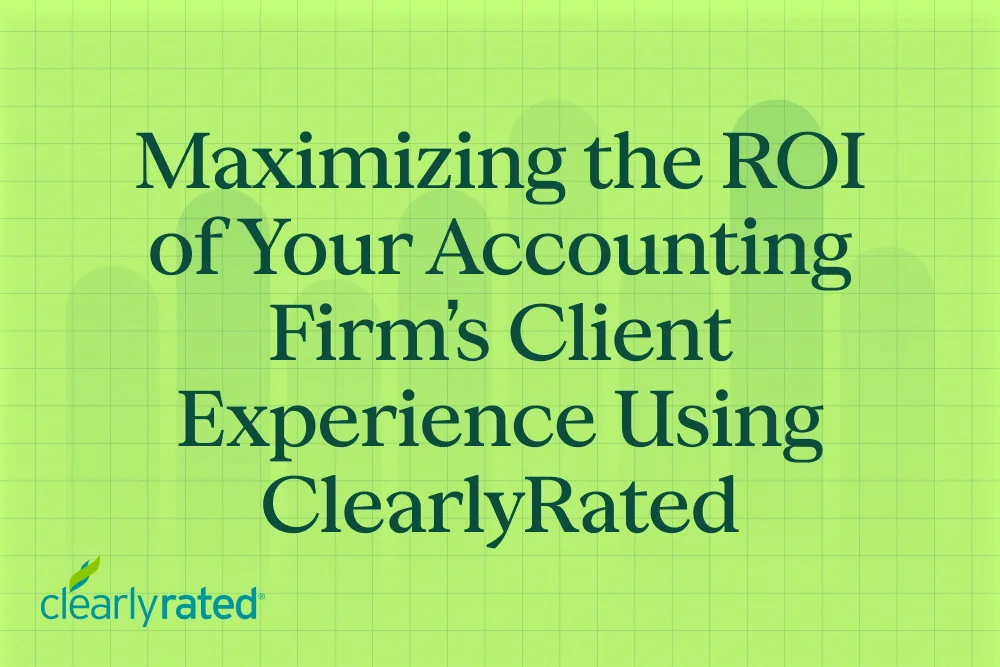







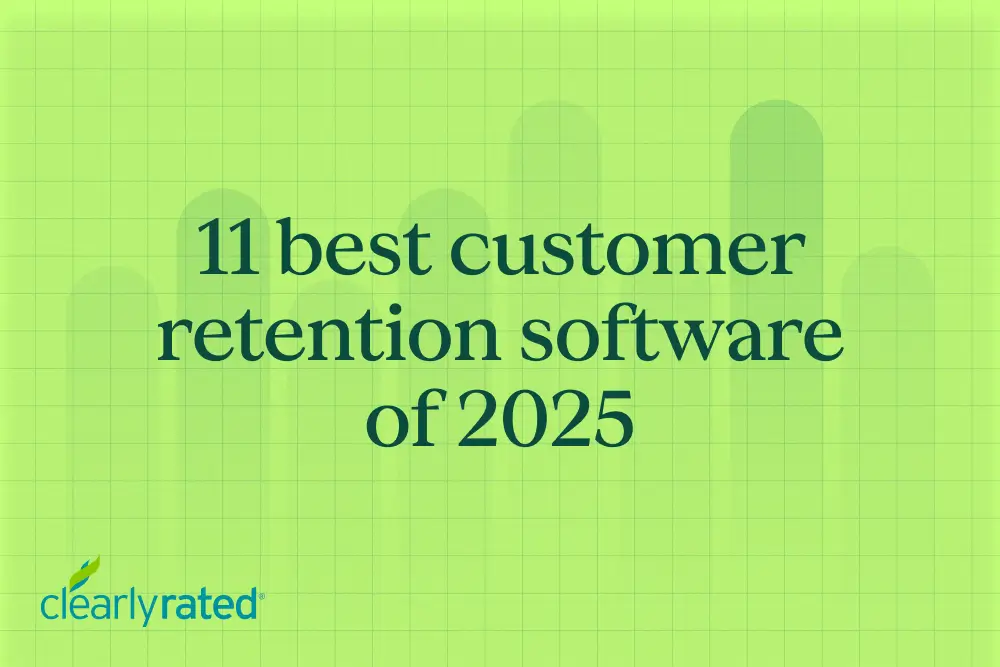

_%20The%20Ultimate%20Guide.png)
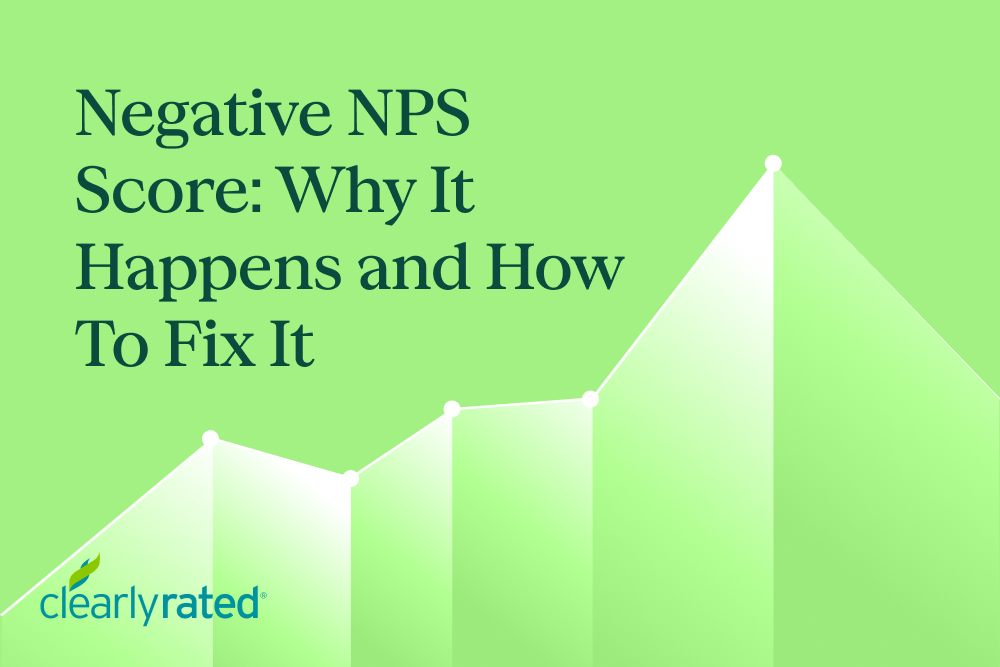
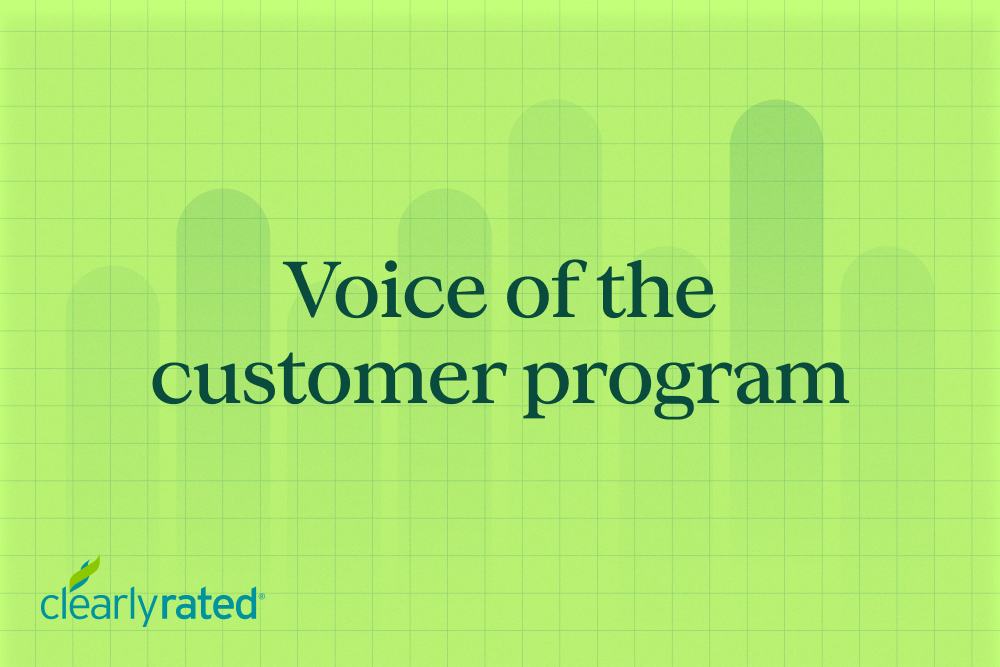
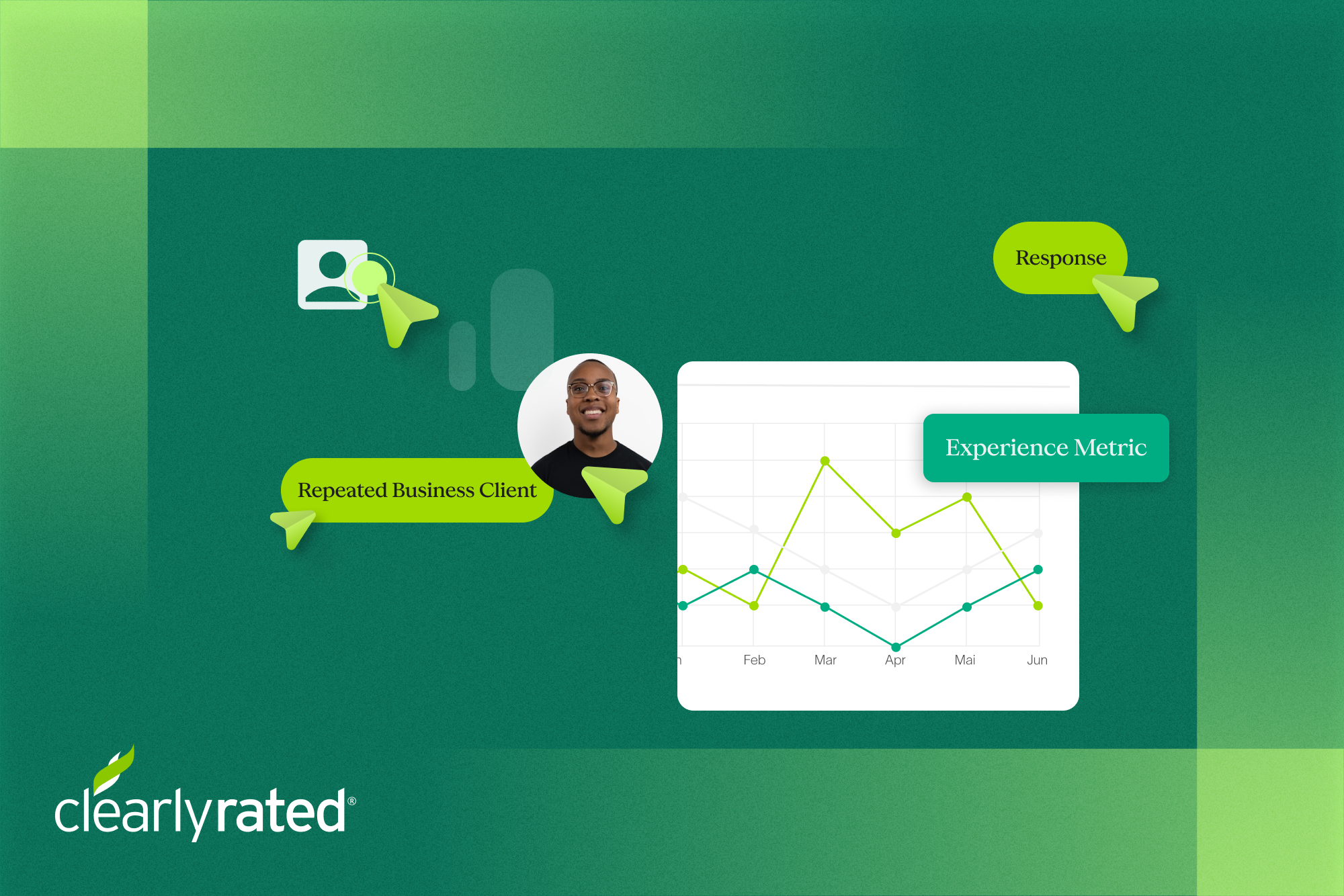
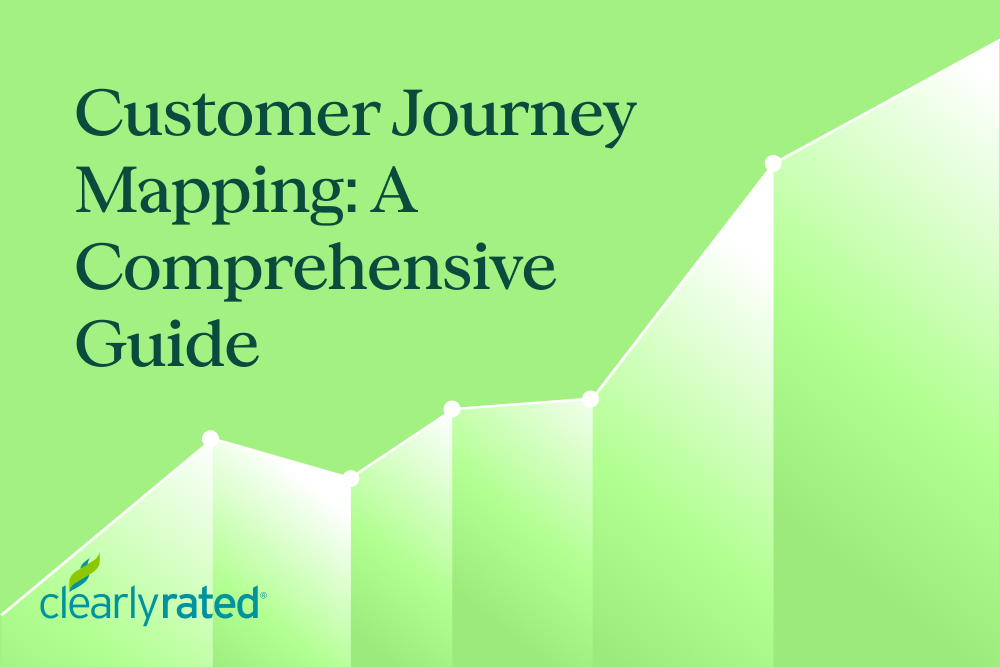

.png)




















%20in%20the%20Workplace.png)










.png)

%20and%20how%20can%20you%20increase%20it.png)
_%20A%20Step-by-Step%20Guide.png)

.png)
.png)




_.png)



%20in%202028.png)


_%20The%20Ultimate%20Guide%20(2024).png)











